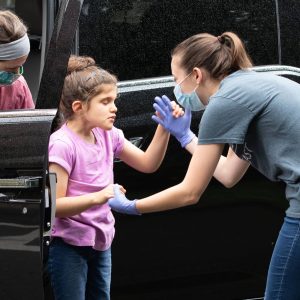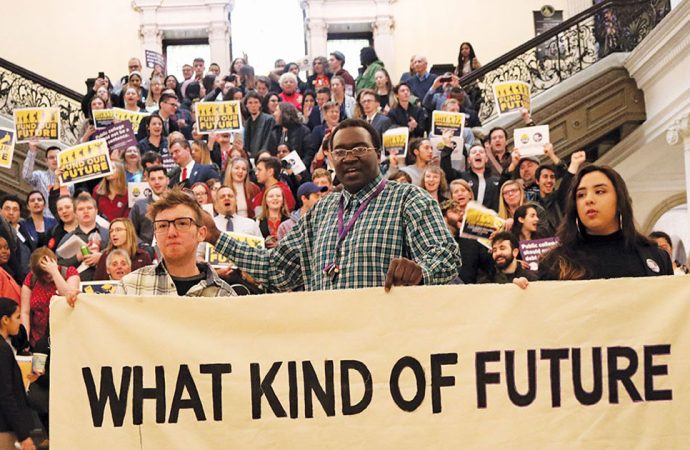Introduction: Ms. Evelyn Jones, a trailblazer in deafblind education, dedicates her life to empowering individuals with deafblindness. With over 30 years of experience as a teacher, program leader. And advocate, Ms. Jones passionately leads the charge towards a more inclusive and accessible educational landscape. Imagine a world where darkness and silence reign supreme. For over
Introduction:
Ms. Evelyn Jones, a trailblazer in deafblind education, dedicates her life to empowering individuals with deafblindness. With over 30 years of experience as a teacher, program leader. And advocate, Ms. Jones passionately leads the charge towards a more inclusive and accessible educational landscape.
Imagine a world where darkness and silence reign supreme. For over 80,000 deafblind individuals in the US, this isn’t imagination, but reality. Yet, within this seemingly limited realm lies a universe of potential waiting to be unlocked.
Today, the call for a revolution in deafblind education echoes across the nation, fueled by innovative approaches, unwavering dedication, and a shared vision of a brighter future. This article embarks on a journey of discovery, exploring the challenges, triumphs, and exciting possibilities that lie ahead as we work to unlock the potential of deafblind children and empower them to lead fulfilling lives.
Breaking the Sensory Wall Deafblind Education in the US

Image by:perkins.org
Traditional education methods, designed for sight and sound, leave deafblind students struggling to access information and express themselves. But a wave of transformative solutions is surging, dismantling sensory barriers and creating pathways to learning. These include:
The Multisensory Deafblind Education in the US
Braille, handshapes, gestures, amplified sound, and vibration devices weave a symphony of communication, allowing children to explore language, literature, and express their unique personalities.
Technological with Deafblind Education in the US
Assistive technologies like screen readers, communication apps, and adapted learning software become gateways to education, fostering independence and engagement with the world around them.
Beyond Sight and Sound:Deafblind Education in the US
Specialized approaches like tactile art, sensory walks, and adapted games ignite learning through diverse sensory experiences, enriching their understanding and appreciation of the world.
Building Bridges from Early On:
Early intervention is the cornerstone of unlocking Deafblind Education in the US
potential. Specialized programs offer a nurturing environment where deafblind children can:
Sprout Communication Skills with Deafblind Education in the US
Through play-based activities, individualized instruction, and multisensory techniques, they embark on a language acquisition journey, exploring sound, touch, and gestures to express themselves.
Discover Their World:

Image by:patriotledger.com
Sensory-rich environments become playgrounds for exploration. Textured objects, stimulating sounds, and engaging activities ignite curiosity and build awareness of their surroundings.
Lay the Foundation for Learning:
Literacy, numeracy, and social-emotional skills are built upon a multisensory foundation, preparing them for academic success and meaningful participation in society.
Collaboration: The Harmony of Success:
A successful education requires a symphony of collaboration. Individualized Education Plans (IEPs) serve as the sheet music, guiding instruction according to each child’s unique needs and preferences. This collaborative effort includes:
Educators as Conductors:
Equipped with specialized training and knowledge of deafblindness, educators become skilled guides, orchestrating engaging learning experiences that tap into individual strengths.
Families as Partners:
Parents become active participants in their child’s education, working hand-in-hand with educators to ensure their needs are met and their voices are heard.
Specialists in Harmony:
Speech therapists, occupational therapists, and other specialists join the chorus, providing holistic support and addressing individual challenges.
(Informative Table)
| Challenges | Solutions |
|---|---|
| Communication Barriers | Multisensory communication approaches, assistive technology |
| Limited Access to Information | Adapted learning materials, audiobooks, specialized software |
| Social Isolation | Inclusive classrooms, peer support networks, community outreach programs |
| Lack of Trained Professionals | Increased training initiatives, scholarships, mentorship programs |
Empowering the Future: Seeing and Hearing the Possibilities:
The journey towards revolutionizing deafblind education is ongoing, requiring continued investment in research, training, and resources. But the progress is undeniable. Deafblind individuals are graduating from universities, pursuing successful careers, and advocating for their rights. This is a testament to the dedication of educators, families, and the unwavering spirit of deafblind individuals themselves.
Conclusion:
The potential of deafblind children in the US is as vast as the universe itself. By embracing innovative approaches, fostering collaboration, and ensuring access to quality education, we can unlock their potential and create a future where their unique voices resonate loud and clear. Let us celebrate their achievements, advocate for their rights, and together, revolutionize the landscape of deafblind education, ensuring every child has the opportunity to see and hear their own bright future unfold.
















